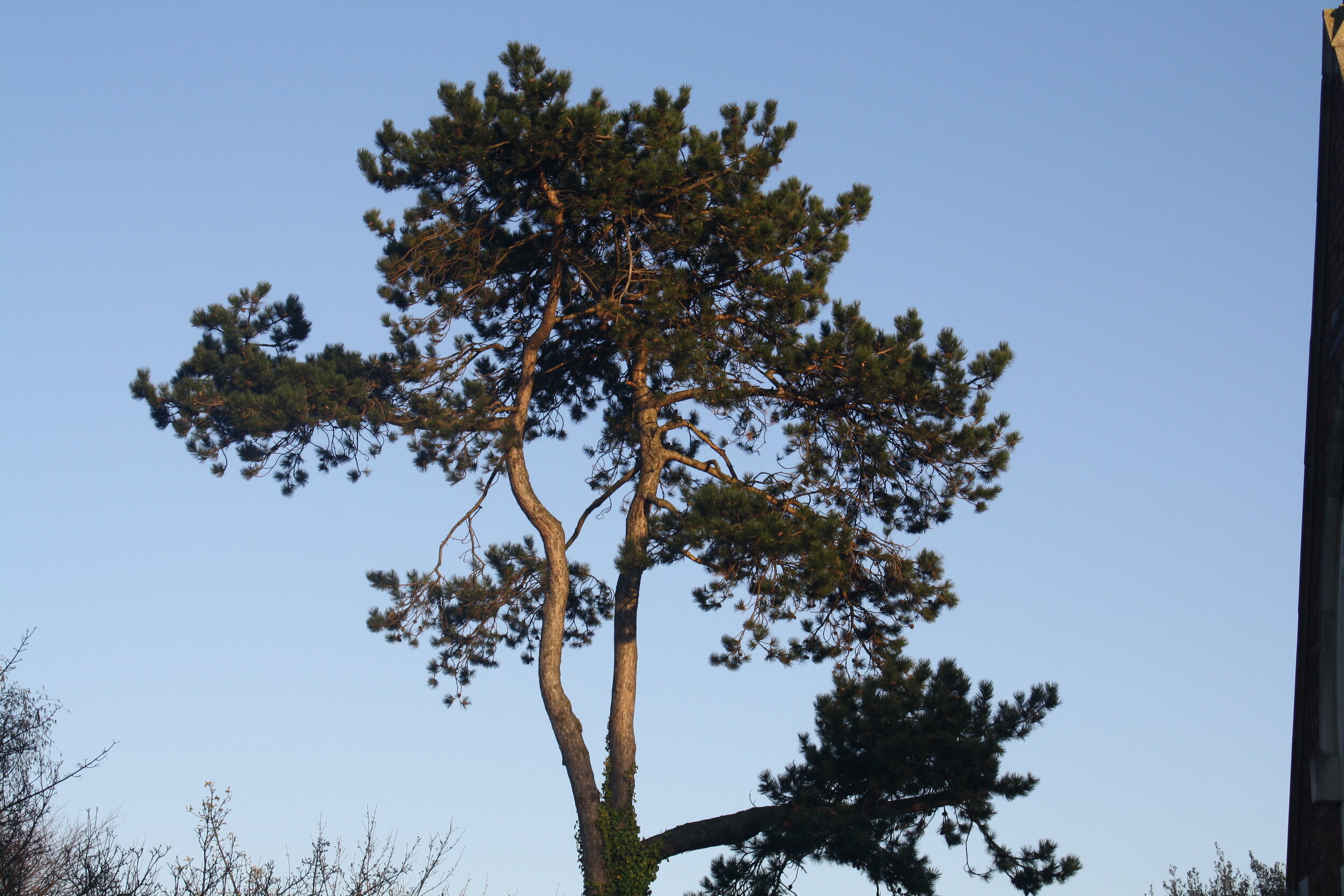
Benefits of Street Trees in Urban Environments
Social & Public Health Benefits
“Urban forest planning and management should strategically promote trees as a social determinant of public health”
Air purification
Trees naturally purify our air by removing pollutants such as carbon dioxide (CO2), nitrogen dioxide (NO2) and particulate matter (PM) from the atmosphere. They do this actively via pores on their leaves called stomata, and passively by slowing air movement and providing settling surfaces. Air pollution increases the risk of stroke, heart disease, dementia, lung cancer and chronic respiratory diseases like asthma. In 2020 in Ireland 1, 300 people died prematurely due to air pollution. Urban tree planting is a vital tool in protecting public health.
Mental Health
There has always been an intuitive belief that trees and nature have a positive impact on our mental health. This primal sense is now backed by a growing body of scientific literature. Studies have shown that residents in neighbourhoods with higher amounts of tree canopy have better mental and general health, this correlation doesn't exist in grassed but treeless areas. Several studies show that tree canopy creates lower rates of ‘psychological distress’ by activating our parasympathetic nervous system, slowing our heartbeats and reducing stress. Walks through green space have also been shown to improve mental acuity and memory recall. Green, leafy trees provide sensory relief in urban areas dominated by hard surfaces, right angles, glass and concrete, and intrusive, attention-seeking advertising. People are happier and less likely to suffer from depression when they have a connection to nature. This lower stress is evident in decreases in blood pressure and cortisol.
Research from May 2021 has highlighted the devastating impact that climate change is having on the mental health and emotional wellbeing of people around the world. A key recommendation from this study is to prioritise successful climate mitigation and adaptation actions that will also improve our mental health by reducing social inequalities, improving air quality and providing equitable access to nature. These are all solutions that the Urban Tree Revival advocate for.
Social Cohesion
Studies have shown that areas with higher urban tree canopy and green spaces have lower levels of crime and greater social cohesion. The presence of green spaces and mature trees seems to encourage physical and social activity and a sense of connectedness to communities. Prioritising nature in our urban planning seems to directly improve citizens quality of life. Additionally the presence of trees can reduce noise pollution by up to 40% by absorbing and blocking sound, screen unattractive views and soften the harsh outline of masonry, metal, asphalt, steel and glass.
2. Environmental Benefits
Flood Mitigation and Water Purification
Trees help reduce the risk of floods following heavy rainfall. They are natural sponges absorbing water from their roots, but also their canopies, which capture and slow vast amounts of rainfall. Stormwater management will become increasingly problematic in cities like Dublin with heavy rainfall increasing due to climate change. This coupled with inadequate wastewater infrastructure means more raw sewage deposits in Dublin bay. The removal of unnecessary hard surfaces and the opening of tree pits will help our cities become more resilient to effects of extreme rainfall.
Carbon Sequestration
Heat is trapped in the atmosphere due to high levels of carbon dioxide (CO2) and other heat-trapping gases that prohibit it its release into space - this is known as the "greenhouse effect." Trees remove, or sequester, CO2 from the atmosphere during photosynthesis and return oxygen back to the atmosphere as a byproduct. About half of the greenhouse effect is caused by CO2. Trees therefore act as a carbon sink by removing the carbon and storing it as cellulose in their trunk, branches, leaves and roots while releasing oxygen back into the air.
Trees also reduce the greenhouse effect by shading our homes and office buildings. This reduces air conditioning needs up to 30%, thereby reducing the amount of fossil fuels burned to produce electricity. This combination of CO2 removal from the atmosphere, carbon storage in wood, and the cooling effect makes trees a very efficient tool in fighting the greenhouse effect.
Enhancing Biodiversity and Conservation
Biodiversity can thrive in urban environments if it is allowed to do. Given 60% (check) of Irish citizens live in our towns and cities, many people are unable to observe the wonders of nature in their daily lives. Street trees and urban forests can serve as a window into the natural world, and enable a host of species to adapt and prosper in novel locations if appropriate conditions are created. With so few natural habitat’s remaining in both urban and rural settings, city management practices that preserve and increase all aspects urban forest, from street trees to urban parks and woodlots will benefit people and wildlife alike.
3. Economic Benefits
Enhanced Economic Stability
Communities and business districts with healthy tree-cover attract new residents, industry, and commercial activity. Trees enhance economic stability by attracting businesses; people linger and shop longer when trees are present. Where a canopy of trees exists, apartments and offices rent more quickly and have a higher occupancy rate; workers report more productivity and less absenteeism.
Energy conservation
A tree is a natural air conditioner. The evaporation from a single tree can produce the cooling effect of ten room-size, residential air conditioners operating 20 hours a day. This will become increasingly important as average Summer temperatures in Ireland rise in coming years due to climate change. Tree windbreaks can reduce residential heating costs 10-15% while shading and evaporative cooling from trees can cut residential air-conditioning costs 20-50%.
Further Reading
Social and Public Health Benefits
https://phys.org/news/2019-07-urban-trees-mental-health.html
https://jamanetwork.com/journals/jamanetworkopen/fullarticle/2739050
Environmental and Economic Benefits
https://www.sciencedirect.com/science/article/abs/pii/S1618866706000732?via%3Dihub
https://www.naturewithin.info/UF/TreeBenefitsUK.pdf
https://canopy.org/tree-info/benefits-of-trees/
https://www.researchgate.net/publication/316441902_Dublin_Tree_Canopy_Study_Final_Report